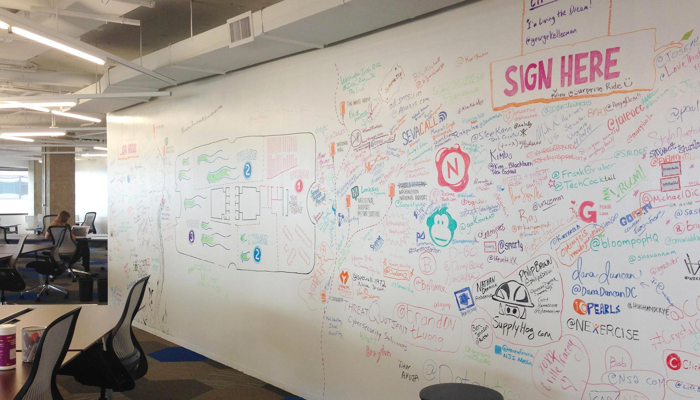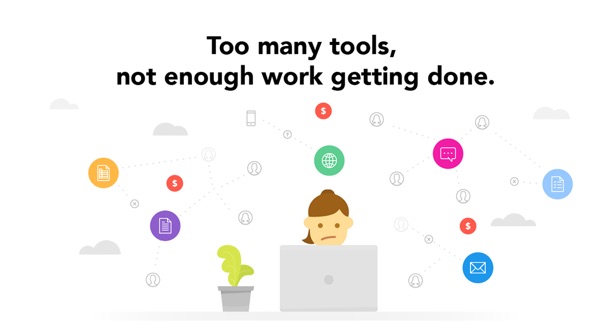Three reasons why incubators breed failure

These past few years, I’ve provided various types of support for some tech incubators in the Kitchener-Waterloo region where I live (it’s a complex arrangement that I won’t go into within this post, but mostly involves helping people with technology implementation issues related to software). It’s not hard to find tech incubators nowadays - they’ve become quite popular this past decade, and larger cities often have several incubators of various sizes.
I’ve always found incubators a glorious oxymoron. They are often quite beautiful, expensive spaces created by the generous funding of corporations, universities and governments that want to spend money to look trendy. But, according to statistics, 97% of everyone chasing their hopes and dreams in that beautiful space will fail miserably, and walk away with no more technology or business experience than they entered with. In other words, incubators are style-over-substance, a place where big hopes and dreams go to die.
And those hopes and dreams are definitely visible everywhere in an incubator, from the stylish furniture and movable desks to the whiteboards littered with cheeky company logos and inspirational quotes. The incubator crowd is equally invested in the style: hipster clothing, vanity Macbooks, and if you talk to them, the unwavering belief that their idea will become a billion-dollar company. If you look around, you’ll likely find at least one picture of Steve Jobs or Jeff Bezos, as well as a food station to give the illusion that people eat, sleep and work there all the time (in reality, however, the place is usually dead after 6pm, when most go out for craft beer and return sometime before noon the next day).
So, why do they breed failure? I’ve been a developer since the late 1980s, and so I have a bit more insight into how we got into this mess. Here are three things I’ve observed:
Thing #1: People spend all their time on the wrong things
You may think we didn’t have collaborative and agile development in the 1980s and early 1990s, but we certainly did - we just never called them that, and we approached them in a fundamentally different way than most do today. Back then, I worked remotely writing SunOS 4 drivers and interfaces for Sun Microsystems. I dialed up the servers in the office and used a text-based program to check my messages, update my progress, communicate with others on my team, and get information about the next sprint of software development. To transfer files, we used UUCP (TCP/IP wasn’t free back then, so FTP was out), and we kept our own files versioned and branched such that changes could easily be merged with other developer code. In short, we had all of the same functionality that we have today with the Internet, Git, and collaboration software - it just didn’t look as pretty. The big difference is that we only spent time and effort using them if they provided a function that was useful to the project.
Today, there are hundreds (if not thousands) of productivity apps for developers, and what I’ve noticed within incubator environments, is that most people are spending their time looking for multiple “hot” productivity apps and learning how to use them, instead of actually focusing on solving problems and writing code. There’s a general perception that if you are well-organized, somehow things will fall into place. Unfortunately, in reality, things only fall into place if you actually do the work. Only use one or two productivity tools that will help you save time and focus on the problem that you are trying to solve.

I can’t tell you how many people I’ve met who have wasted 90% of their time trying to learn how Gitlab runners work for their small PHP or Javascript project, or make sure everything is integrated into Monday.com automatically for every minor detail on a project that involves two people. By the time they get it all sorted out, they’ve probably run out of money, and someone else has already implemented a better solution by actually doing the work.
Moreover, I’ve noticed that many incubator developers try to do everything related to a project, including stuff that should really be left to someone with marketing or business experience. I couldn’t tell you how many people I’ve met within incubators who’ve spent more than half of their time and money getting their website and logo designed instead of developing the actual software (or hardware in some cases). After all, the website and logo are a more tangible representation of their billion dollar company, and likely more fun to do than actually develop the actual product.
Thing #2: There is a general perception that ideas generate greatness

Everyone I’ve met at startups think that all great things started from one person’s idea or vision. This is because the few people who receive the public tech spotlight are shown in a way that depicts them as visionaries who started with an idea, and that it was the merits of that idea that led them to greatness. It’s romantic, and romanticism isn’t dead. It’s alive and well in incubators.
In reality, ideas are cheap - everyone has them. Nearly all successful ventures in the tech industry didn’t start with a unique vision that was implemented. Instead, they started with a desire to make money using technology; ideas were grown from that desire, and opportunities were taken at the right time. Successful companies often started with stark resources and let monetary opportunities dictate what ideas were generated and when.
When an opportunity presents itself in the marketplace, successful startups will produce something quickly on very little resources (keep the nut small) and see if it is viable - if it is, then the business machine takes over and grows it as much as possible. If it isn’t, then they move on quickly so as not to waste money on an idea that will never see the light of day.
Thing #3: There is no real guidance, because funders don’t care about return on investment
Incubators were originally designed to provide the senior business guidance and education needed to get a tech startup off the ground, allowing the tech startup to focus on the work at hand. They were envisioned as an extension of what venture capital (VC) firms have done for startups in Silicon Valley during the past 40 years.
However, the big difference between most modern incubators and VC firms is that VC firms are actually on the line for the money - they invested their firm’s money into the startup, rather than running off of free money from companies and governments. This means that the people in the VC firm run the business side of the startup, make the important decisions, and if they feel that they aren’t going to get a return on their investment, they’ll sell the remaining work off to another company on a whim to recoup their investment dollars or cut their losses. It’s cut-throat and effective from a business point of view, since VC firms have no intention of losing money.

Incubators, on the other hand, are the friendly, inclusive environment that allows people with big ideas to feel good about themselves as they are spending 90% of their time on logos, website design, and productivity apps.
During this time, incubator funders parade visitors around their beautiful zoo showcasing how “great things about about to happen here” while the zoo inhabitants eagerly demonstrate how their ideas will eventually change the world. The problem is that it’s all style-over-substance, and the remaining 10% of their time is spent failing at the substance.
Incubator funders have their dog and pony show, and don’t provide the guidance that VC firms do. If the incubator funders were on the hook for the money spent, I’m sure they’d run their operation a lot meaner and leaner. No expensive building and stylish furniture. And management with strict control over the development and fate of projects.
Every time I’m at an incubator, I can’t help but feel sorry for the poor startup folk working there - they probably go home every day, cry into their MacBook and shake their fist at the sky screaming “Why? Why have you failed me, Steve Jobs?!?” After all, it’s not their fault - they’ve been conditioned to talk-the-talk rather than walk-the-walk.